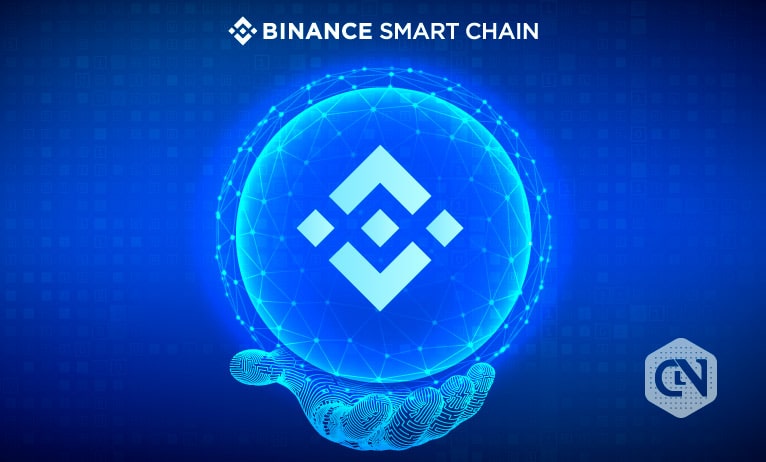Binance Smart Chain On A Wide-Scale Adoption Spree Amidst Ethereum’s High Gas Fees

The Binance Smart Chain (BSC) has been witnessing increased activity at a breakneck speed in the past few days, courtesy of the outrageous gas fees that have rendered Ethereum-based AMM-DEXes totally unusable by smaller retail traders who have switched focus to the BSC network, having recognized its value.
Binance Smart Chain went live on the mainnet on Sep 01, 2020, activating the parallel blockchain to Binance Chain that will enable the creation of smart contracts for tokens on the Binance-branded blockchain.
BSC is an Ethereum Virtual Machine-compatible blockchain that increases the utility of both Binance Chain and BNB. The chain was launched as a Proof of Staked Authority (PoSA) consensus mechanism, creating an ecosystem where validators, token holders, developers, and users all benefit from a rewarding blockchain that offers high performance and ample space for further innovations.
Since going live, the chain has witnessed unprecedented growth within a few months. Its success has been solely tied to its ability to solve the impending challenges that have plagued the Ethereum Blockchain for some time now, while the ETH2.0 mainnet stays under development.
The increased adoption of decentralized finance has resulted in major growth for the ecosystem, with the total value locked in the BSC-based Defi protocol hitting an all-time high of $12 billion. There has been a network among major blockchain projects that have rallied behind BSC to create more cohesion within the ecosystem with a high-end DeFi interoperability framework.
BSC is Now Handling More Transactions Than Ethereum
The Rising Interest in the Chain has been evident in the metrics it has successfully pulled in the past few weeks. According to data available on Etherscan and Bscscan, the number of daily transactions on the Binance Smart Chain now leads the Ethereum Network by more than 70% as the network sees explosive on-chain activities through BSC-based DEXes.
According to data obtained as of February 18, the BSC network processed about 2.12 million transactions as opposed to 1.26 million transactions that were processed on the Ethereum blockchain. Thanks to the explosive growth of DeFi protocols like Venus Protocol and PanCakeSwap that currently ranks as the biggest protocols on the Binance Smart Chain.
During this time-frame, reports showed that the total number of unique addresses on the Binance Smart Chain tripled in a week. The gas fee for completing transactions on BSC has been extremely cheap and affordable, boasting an average gas price of 16.5 GWEI. Despite the negligible cost of transactions, they continue to receive almost instant confirmations, saving time and cost.
All these factors have resulted in an influx of developers and projects building on top of the BSC network and have also caused a surge in the user-base. The ripple effect has been observed in the price of BNB, which has witnessed a rise of more than 500% in price, breaking the $300 price mark in the past couple of days.
BSC Is Becoming Home To Most Reputable Innovative Projects
“Build it, they will come” has been the perfect way to describe the meteoric growth witnessed in the BSC network in merely 5 months of going live on the mainnet. With DeFi-focused projects taking the lead in deploying the Binance Bridge to aid the migration of their token to the BSC network, other projects are following suit with a similar approach.
With the influx of large retail investors into the crypto industry in the past few months, the time couldn’t be more right to seek alternative and cheaper blockchain infrastructure in the teeming industry.
This move hasn’t been peculiar to DeFi projects alone. Last week, SaTT, a blockchain-based advertising firm which is widely known for offering influencer-based marketing products across major social media platforms took to its Twitter handle to announce their decision to integrate the Binance Bridge.
The firm which originally deployed its platform on Ethereum clearly cited the need to keep providing its users and community with fast and cheap advertising transactions as the main reason for integrating the Bridge and deploying the BEP20 version of its native token SATT, which is now available for trading on largest the BSC-based DEX PancakeSwap.
Due to the compatibility of the two chains, it is easier for a token to seamlessly co-exist within the two networks, giving users a wide variety of choice; this is the case with SaTT, which has stated that the ERC20/BEP20 version of their token will co-exist, giving users a more convenient option when completing advertising transactions.
Could Ethereum Be Under A Huge Threat?
Should the sudden surge in BSC products be considered a ‘9-day wonder’, or is it in for the long-haul? Can the success of BSC hamper and eat into the user-growth of Ethereum? It might be too early to predict. But one thing is for sure, the growth of BSC will definitely keep Ethereum developers on their heels to seek a faster solution to the raging gas wars ravaging the network.
Nothing is certain except for death and taxes. Maybe we could also be certain that these scenarios have the potential to create an environment that fosters innovation and expands the industry, creating a range of products for users to leverage on. It will be, without a doubt, interesting to see how this unfolds in the near/mid-term.



